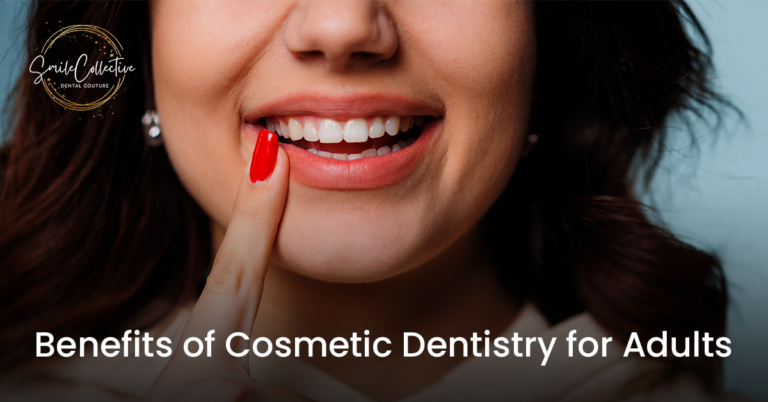Teeth whitening is a process that includes techniques that work to make someone’s natural teeth seem brighter and whiter. Teeth whitening procedures contain sanding down stains, bleaching, ultraviolet light therapy, and many more.
Many teeth whitening products are available in the market these days, and you can try multiple methods at home. You can also get your teeth whitening treatment done at your dentist. Some teeth whitening procedures can cause some uneasiness but the question is “Does teeth whitening cause damage?”.
Smile Collective is here to provide you with complete guidance! Let us start!
Yes, teeth whitening is effective!
Teeth whitening is a widespread solution to fight dental discoloration provoked by drinking excessive coffee, consuming some specific foods, smoking, and natural ageing. In fact, as per a 2015 survey by the (AACD) American Academy of Cosmetic Dentistry, teeth whitening is classified among the most elevated and popular cosmetic dentistry practices performed as reported by 351 dental professional respondents.
The procedure of teeth whitening is effective and it has many advantages. The only concern is the way it is being done. So, we advise visiting professionals, we at Smile Collective provide a comprehensive professional teeth whitening procedure for you!
Is the teeth whitening procedure safe?
Indeed it is! The teeth whitening procedure uses peroxide and it is a safe method that does not harm your teeth. Provided that your teeth and gums are healthy, whitening your teeth doesn’t remove the enamel.
Generally, the only element that makes teeth whiter is peroxide. However, any teeth whiteners that claim to whiten teeth without having peroxide simply use light or components to dehydrate your teeth. When teeth are dehydrated, it offers an instantaneous appearance of whiter teeth. But once the saliva rehydrates the teeth, it returns to its original colour. Thus, without peroxide, the whitening result only lasts a very short period.
While teeth whitening with peroxide is a straightforward process, it does require a dentist in its application. The reason is that an important part of this process is keeping the peroxide gel away from your gums.
During the professional teeth whitening procedure, a rubber dam is put over the teeth to cover the gums, and a bleaching by-product is painted onto the teeth. Then a light or laser is burnished on the teeth to start the chemical. The light runs up the reaction of the whitening and the colour change can be accomplished more quickly. The vibrant ingredient in the whitening effect goes through the enamel and into the second coating of the tooth known as the dentin. The product starts working to reverse staining or discoloration, effectively bleaching that second coating. After the treatment, the tooth then rehydrates inherently from our saliva. It’s essential to remember when utilising whitening treatments to ignore stain-enhancing foods/drinks while the tooth is rehydrating.
This method does not harm the tooth layers or virtue of the tooth, but can sometimes lead to normal tooth sensitivity.
Temporary sensitivity is normal.
Some people experience momentary sensitivity in the gums or teeth when using whitening products. And, let us tell you that it is not an indication of long-term injury, but it can be a little uneasy sometimes.
The science behind teeth whitening
It is likely no surprise that tooth enamel is the most formidable tissue in the human body. It is also porous and has microscopic hollow rods or tubes that go down to the coating below, called the dentin. Stain-causing elements can ooze into the tooth enamel via these tubes. It’s the dentin that grips the majority of the stain.
Teeth whitening bleaching uses hydrogen peroxide or carbamide peroxide. These can be used in the form of toothpaste, gel, or on a plastic whitening stripe. The solution infiltrates the teeth causing a chemical response known as oxidation that liquefies stains. It is considered to be safe.
Why do results vary?
There are generally two types of tooth blots: extrinsic and intrinsic. Intrinsic stains are driven by interior factors like ageing, heredity, and some health problems. And, on the other hand, extrinsic stains are the ones that arrive from smoking, sipping coffee, or red wine. In other terms, they arrive from outside the body.
As far as this whitening procedure is concerned, professional whitening products work nicely to clear extrinsic stains than intrinsic stains. Also, note that some intrinsic stains cannot be removed permanently.
Maintaining the results
Your eating, drinking, and oral hygiene practices can influence how lengthy your teeth whitening results last. After you’ve completed any whitening treatment, your teeth are still sensitive to tarnishing from beverages like tea and coffee, and specific foods. Rinsing your mouth or brushing your teeth after eating or drinking can keep those types of discolouring mechanisms from settling into the texture of your teeth and automatically reduce the chance for plaque to construct up!
Final Words!
As long as you cling to dentist-approved procedures, whitening your teeth is considered to be safe. Make sure to get the procedure that fits your requirements and always follow the directives for the product. Contact Smile Collective for professional teeth whitening treatments and get done with your treatment safely with us!



